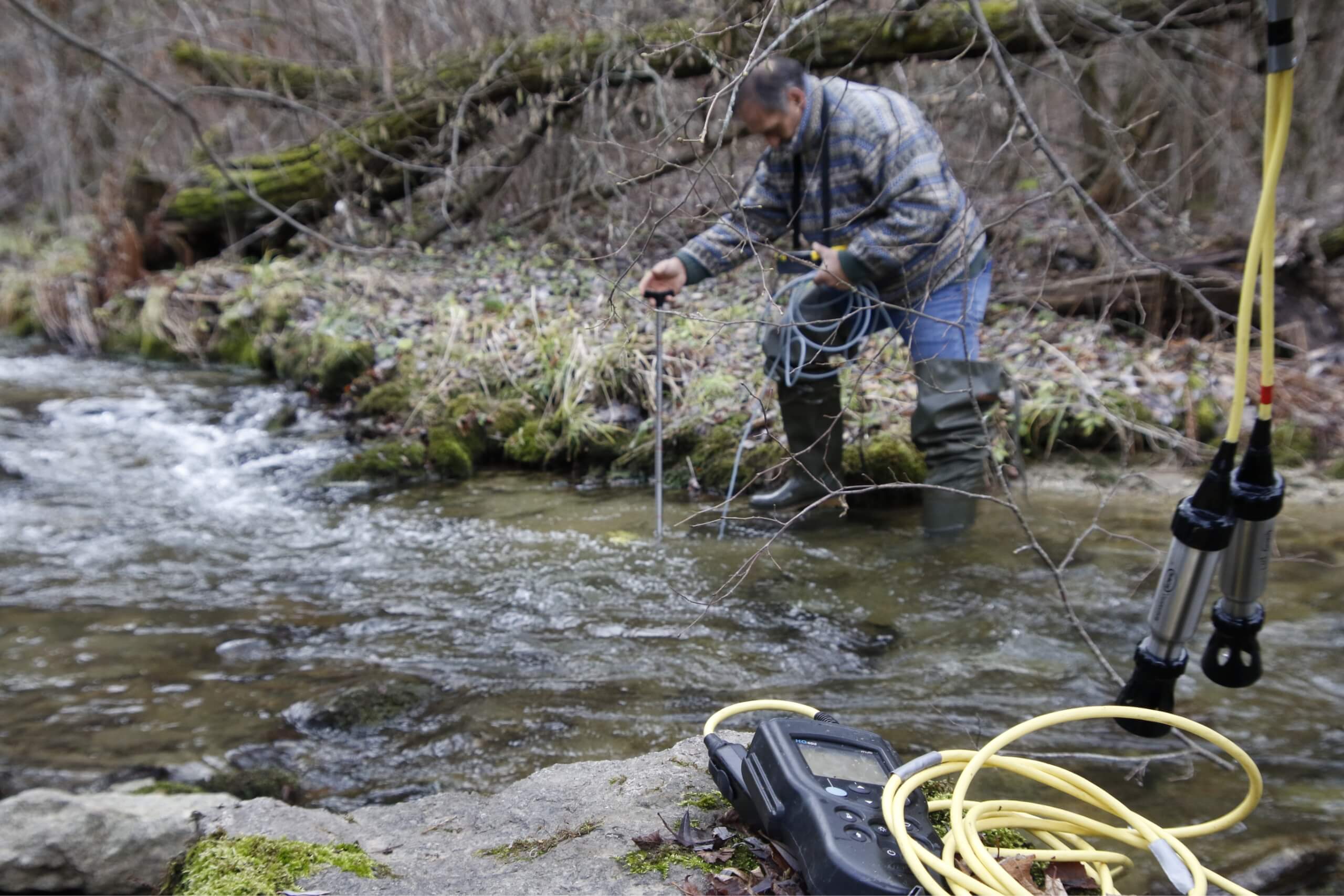PREFEASIBILITY STUDY FOR THE REHABILITATION OF AGIOS GERMANOS RIVER, PRESPA

Species
Prespa trout, Prespa barbel, Prespa nase, Prespa minnow, Prespa loach, Prespa spirlin, Prespa chub, Prespa bleak, Prespa roach
Organization
SOCIETY FOR THE PROTECTION OF PRESPA
Duration
February 2023 - December 2026
Region
Prespa
THE NEED
The two Prespa lakes are famous for their nine endemic fish species. Species that have evolved to spawn in running waters, with one, the Prespa trout, living permanently in the Agios Germanos stream. For centuries, this stream’s partial discharge into Lake Mikri Prespa (Lesser Prespa) served the endemic fishes’ spawning needs. But in the 1930s, the branch to this lake was blocked and the morphology of the stream’s drainage basin was altered to accommodate irrigation needs. At the same time, for many reasons, including climate change, eutrophication has increased in both lakes, significantly affecting endemic fish populations.
The need to restore the Agios Germanos stream, in order to regain its ecological functions, serve biodiversity and ensure sustainable use of water, has been raised as a priority at a local and regional level. The old fluvial spawning habitats need to be restored, to contribute to fish recruitment and population increases, while the stream’s clear, well-oxygenated waters will significantly improve water quality in Mikri Prespa.
THE PROGRAM
The program aims at the completion of a pre-feasibility study for a rehabilitation plan for Agios Germanos stream, through a participatory process, with the ultimate goal of improving wildlife stewardship in Prespa to the benefit of the targeted endemic fish species. The process provides for the meaningful participation of all local, regional and national stakeholders in the formulation of this plan.
The first step is to build knowledge and prepare the ground for understanding, discussion and decision-making (encompassing conceptual, technical but also social, financial, environmental, ecological, institutional, transboundary and legal aspects). In this direction, a detailed hydro-geomorphological analysis and a pre- feasibility study on the hydromorphological rehabilitation of the stream and the re-establishment of its hydraulic and ecological connection to Mikri Prespa Lake (including a cost-benefit analysis) will be carried out.
Dissemination of knowledge and dialogue will increase public support and engagement, enabling the formulation of sustainable interventions. The proposed rehabilitation measures will aim to benefit the fluvial/ lacustrine ecosystem, the nine endemic fish species and human activities, through the improvement of water resources. As we are talking about a nature-based solution, aiming to address the societal challenges of climate change, environmental degradation and biodiversity loss, as well as economic and social development issues, public participation is a vital component of the program. This is why a detailed mapping of stakeholders’ opinions will be conducted, on a national and transboundary level, as well as an analysis of the legal framework and the resulting regulations.